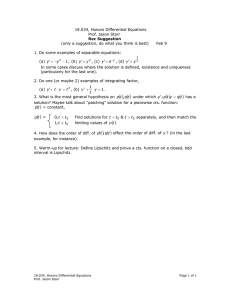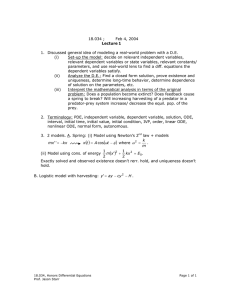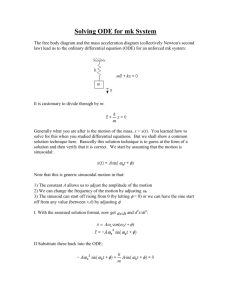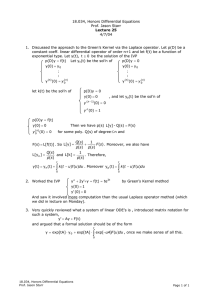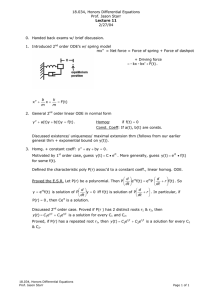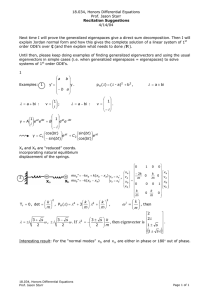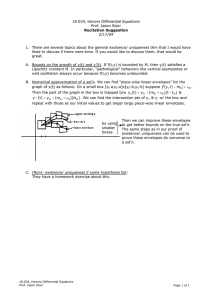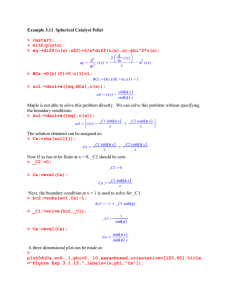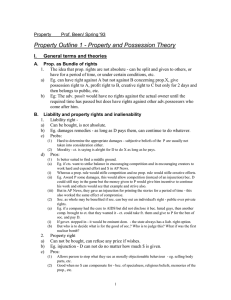18.034, Honors Differential Equations 2/18/04
advertisement
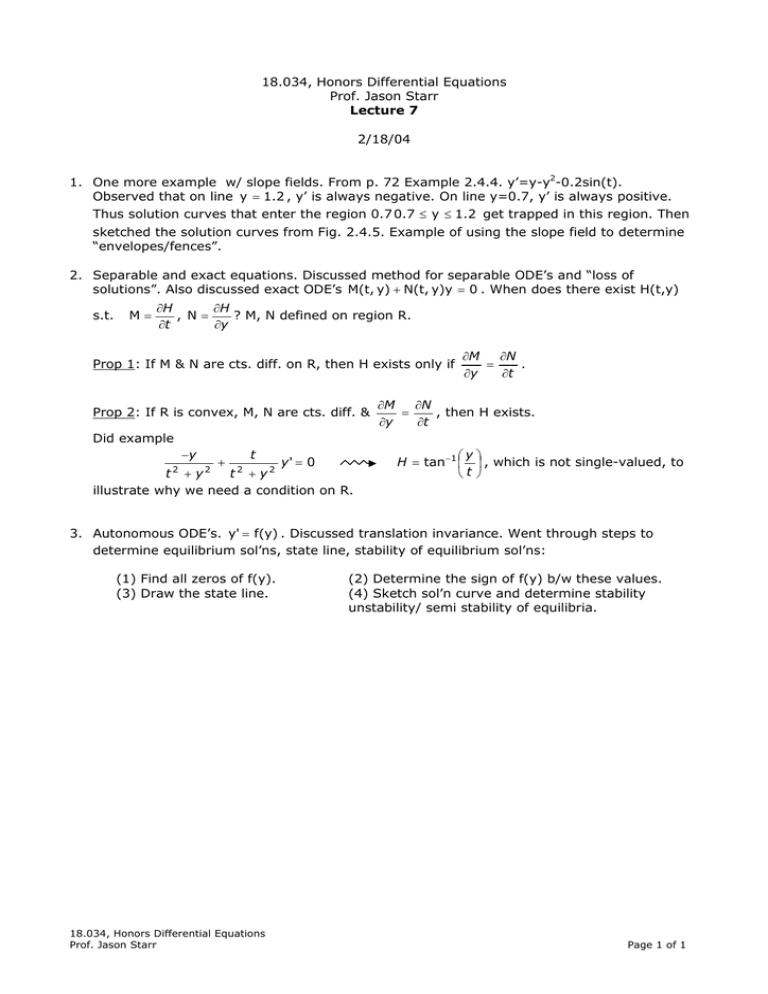
18.034, Honors Differential Equations Prof. Jason Starr Lecture 7 2/18/04 1. One more example w/ slope fields. From p. 72 Example 2.4.4. y’=y-y2-0.2sin(t). Observed that on line y = 1.2 , y’ is always negative. On line y=0.7, y’ is always positive. Thus solution curves that enter the region 0.7 0.7 ≤ y ≤ 1.2 get trapped in this region. Then sketched the solution curves from Fig. 2.4.5. Example of using the slope field to determine “envelopes/fences”. 2. Separable and exact equations. Discussed method for separable ODE’s and “loss of solutions”. Also discussed exact ODE’s M(t, y) + N(t, y)y = 0 . When does there exist H(t,y) s.t. M= ∂H ∂H , N= ? M, N defined on region R. ∂t ∂y Prop 1: If M & N are cts. diff. on R, then H exists only if Prop 2: If R is convex, M, N are cts. diff. & ∂M ∂N = . ∂y ∂t ∂M ∂N = , then H exists. ∂y ∂t Did example −y 2 2 + t 2 2 y' = 0 t +y t +y illustrate why we need a condition on R. ⎛y ⎞ H = tan− 1 ⎜ ⎟ , which is not single-valued, to ⎝t ⎠ 3. Autonomous ODE’s. y' = f(y) . Discussed translation invariance. Went through steps to determine equilibrium sol’ns, state line, stability of equilibrium sol’ns: (1) Find all zeros of f(y). (3) Draw the state line. 18.034, Honors Differential Equations Prof. Jason Starr (2) Determine the sign of f(y) b/w these values. (4) Sketch sol’n curve and determine stability unstability/ semi stability of equilibria. Page 1 of 1
